You are using an out of date browser. It may not display this or other websites correctly.
You should upgrade or use an alternative browser.
You should upgrade or use an alternative browser.
Pathogen Stimulated Histamine Production and Release by Neutrophils as a Potential Therapeutic Target in Preventing Progression of COVID-19
- Thread starter Bayard T. Horton
- Start date
Issie
Well-Known Member
Interesting article.
So this doc chose to moderate and suppress histamine release by H1R by using antihistamines. Yet, for these other two receptors to work, it requires histamine to activate them.
Possibly in an acute situation where mast cells are degranulating too fast, and we can't get the other receptors to work properly, there may be a need for an Emergency H1R antagonist (suppressor). But not complete block as other two receptors are needed to cause the T cells to activate and help with immune response and inflammation.
Is this how you understand it Bayard?
So this doc chose to moderate and suppress histamine release by H1R by using antihistamines. Yet, for these other two receptors to work, it requires histamine to activate them.
Possibly in an acute situation where mast cells are degranulating too fast, and we can't get the other receptors to work properly, there may be a need for an Emergency H1R antagonist (suppressor). But not complete block as other two receptors are needed to cause the T cells to activate and help with immune response and inflammation.
Is this how you understand it Bayard?
Last edited:
Bayard T. Horton
Member
In an acute process like COVID-19 in its advanced stages or in sepsis it may make sense to block both H1R and H2R to avoid organ damage. To the extent that the negative feedback mechanism that regulates the production of histamine (H2R-H3R) is exceeded or does not work properly, that same histamine and also the rest of the products of the mast cells and the rest of the immune cells will cause massive damage (keep in mind that histamine receptors are not only in immune cells but in all tissues).
Critical role of endogenous histamine in promoting end-organ tissue injury in sepsis.
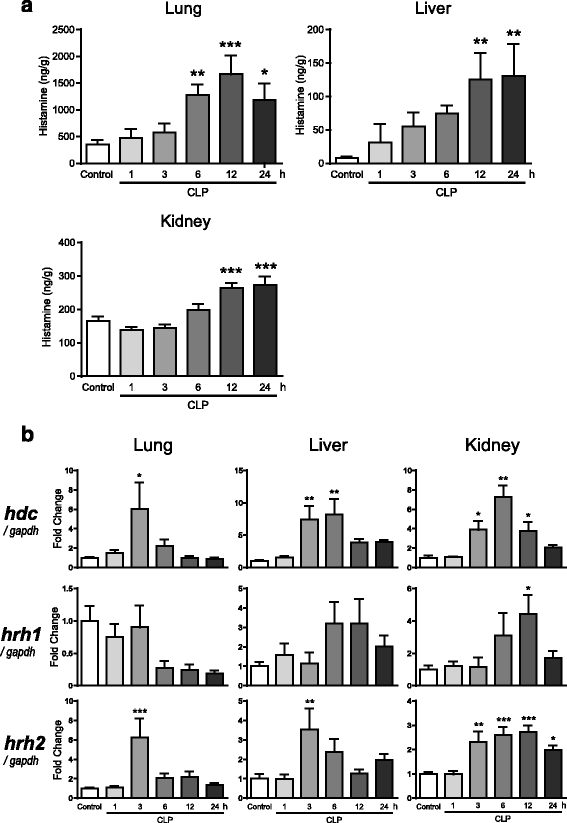
 icm-experimental.springeropen.com
icm-experimental.springeropen.com
Another more interesting option would be to look for an immunomodulation with histamine that would allow to restore this negative feedback mechanism.
Histamine receptor agonist alleviates severe cardiorenal damages by eliciting anti-inflammatory programming.

 www.pnas.org
www.pnas.org
And another option compatible with the previous one would be to use IV vitamin C.
Hydrocortisone, Ascorbic Acid and Thiamine (HAT Therapy) for the Treatment of Sepsis. Focus on Ascorbic Acid.
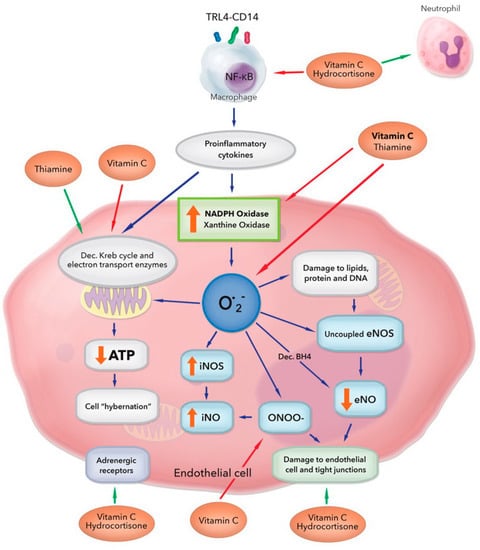
 www.mdpi.com
www.mdpi.com
Intravenous infusion of ascorbic acid decreases serum histamine concentrations in patients with allergic and non-allergic diseases.
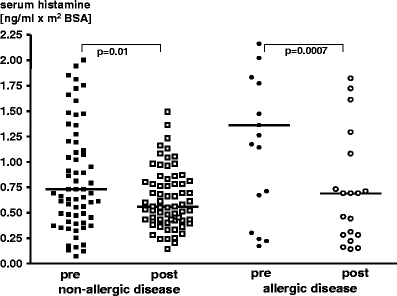
 link.springer.com
link.springer.com
This is another preprint on the topic of COVID-19 and histamine, although they forget that one of the characteristics of famotidine and other H2R antagonists is that they are very powerful radical scavengers.
COVID-19: Famotidine, Histamine, Mast Cells, and Mechanisms
 www.researchsquare.com
www.researchsquare.com
Cimetidine and other H2 receptor antagonists as powerful hydroxyl radical scavengers.
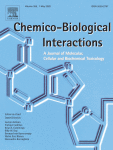
 www.sciencedirect.com
www.sciencedirect.com
H2‐receptor antagonists are scavengers of oxygen radicals.
 onlinelibrary.wiley.com
onlinelibrary.wiley.com
Critical role of endogenous histamine in promoting end-organ tissue injury in sepsis.

Critical role of endogenous histamine in promoting end-organ tissue injury in sepsis - Intensive Care Medicine Experimental
Background Histamine assumes an important role as a major mediator in various pathologic disorders associated with inflammation and immune reactions. However, the involvement of histamine in the pathological conditions and symptoms of sepsis remains entirely unknown. In this study, we establish...
Another more interesting option would be to look for an immunomodulation with histamine that would allow to restore this negative feedback mechanism.
Histamine receptor agonist alleviates severe cardiorenal damages by eliciting anti-inflammatory programming.

Histamine receptor agonist alleviates severe cardiorenal damages by eliciting anti-inflammatory programming
Histamine has been known to play important roles in inflammation, and its inhibition has been expected to ameliorate the pathological statement of heart failure and chronic kidney disease. In this paper, we found that histamine is elevated in the plasma of a preclinical mouse model with severe...
And another option compatible with the previous one would be to use IV vitamin C.
Hydrocortisone, Ascorbic Acid and Thiamine (HAT Therapy) for the Treatment of Sepsis. Focus on Ascorbic Acid.

Hydrocortisone, Ascorbic Acid and Thiamine (HAT Therapy) for the Treatment of Sepsis. Focus on Ascorbic Acid
Sepsis is a devastating disease that carries an enormous toll in terms of human suffering and lives lost. Over 100 novel pharmacologic agents that targeted specific molecules or pathways have failed to improve the outcome of sepsis. Preliminary data suggests that the combination of...
Intravenous infusion of ascorbic acid decreases serum histamine concentrations in patients with allergic and non-allergic diseases.

Intravenous infusion of ascorbic acid decreases serum histamine concentrations in patients with allergic and non-allergic diseases - Naunyn-Schmiedeberg's Archives of Pharmacology
Histamine plays an important role in the development of symptoms in allergic, infectious, neoplastic and other diseases. Empirical findings have suggested beneficial effects of ascorbic acid supplementation in those diseases, and these effects are assumed to be related to a possible decrease in...
This is another preprint on the topic of COVID-19 and histamine, although they forget that one of the characteristics of famotidine and other H2R antagonists is that they are very powerful radical scavengers.
COVID-19: Famotidine, Histamine, Mast Cells, and Mechanisms
COVID-19: Famotidine, Histamine, Mast Cells, and Mechanisms
SARS-CoV-2 infection is required for COVID-19, but many signs and symptoms of COVID-19 differ from common acute viral diseases. Currently, there are no pre- or post-exposure prophylactic COVID-19 medical countermeasures. Clinical data suggest that famotidine may mitigate COVID-19 disease,...
Cimetidine and other H2 receptor antagonists as powerful hydroxyl radical scavengers.

Cimetidine and other H2 receptor antagonists as powerful hydroxyl radical scavengers
Hydroxyl radical scavengers are able to compete with deoxyribose for the hydroxyl radicals generated in a reaction mixture. We found that the H2 recep…
H2‐receptor antagonists are scavengers of oxygen radicals.
Error - Cookies Turned Off
Issie
Well-Known Member
I do find when I can't get "on top" of a MCAS "attack", I have to take the child liquid H1 blocker (Allegra) and a mast cell stablizer (GastroCrom). Trying to not take the H2 blocker though. And this paper brings out how the H2R needs histamine to activate it and that may help the immune system.
Issie
Well-Known Member
This article you posted Bayard, explains a lot for me.....
https://www.mdpi.com/2072-6643/10/11/1762/htm
Explains why I can't take Vit C pills. And why B1 thiamine is helping. (Also known to help POTS and ME/CFS.) All has to do with sepsis, mitrochondria, hypoxia and iron or copper and methylation dysfunction.
I can drink lemon or lime for Vit. C. But not take the supplement. As being in a state of hypoxia and methylation issues, high Vit C will create more ROS. And lower amounts helps protect mitrochondria.
And with ME/CFS, we are said to be in a state of sepsis.......
https://www.mdpi.com/2072-6643/10/11/1762/htm
Explains why I can't take Vit C pills. And why B1 thiamine is helping. (Also known to help POTS and ME/CFS.) All has to do with sepsis, mitrochondria, hypoxia and iron or copper and methylation dysfunction.
I can drink lemon or lime for Vit. C. But not take the supplement. As being in a state of hypoxia and methylation issues, high Vit C will create more ROS. And lower amounts helps protect mitrochondria.
And with ME/CFS, we are said to be in a state of sepsis.......
Issie
Well-Known Member
Maybe the receptor we really want boosted is the H3R. (An agonist is something that boost or increases.) Having histamine higher there and lower at H1 and H2 when in a sepsis state.

 www.pnas.org
www.pnas.org
In conclusion, our paper reveals that plasma histamine is elevated in mice with cardiorenal damages induced by ANS treatment and that H3 agonism plays an important role in the protective actions on both heart and kidney damages through the alteration of gene expression in the anti-inflammatory programming of both tissues. Therapeutic targeting of the regulation of anti-inflammatory programming using the selective H3 agonist could, therefore, be beneficial in the treatment or prevention of cardiorenal dysfunction.

Histamine receptor agonist alleviates severe cardiorenal damages by eliciting anti-inflammatory programming
Histamine has been known to play important roles in inflammation, and its inhibition has been expected to ameliorate the pathological statement of heart failure and chronic kidney disease. In this paper, we found that histamine is elevated in the plasma of a preclinical mouse model with severe...
In conclusion, our paper reveals that plasma histamine is elevated in mice with cardiorenal damages induced by ANS treatment and that H3 agonism plays an important role in the protective actions on both heart and kidney damages through the alteration of gene expression in the anti-inflammatory programming of both tissues. Therapeutic targeting of the regulation of anti-inflammatory programming using the selective H3 agonist could, therefore, be beneficial in the treatment or prevention of cardiorenal dysfunction.
Last edited:
Issie
Well-Known Member
Bayard, will you post the article on Tagamet. (If I understood it properly), It's supposed to work on H2R but without totally blocking histamine and allowing H3R to turn on and allowing H2R to activate necessary things for autoimmune function. I'm not finding that article. And if I'm misunderstanding, will you clarify it for me.
Bayard T. Horton
Member
Cimetidine (Tagamet) was the first H2R antihistamine to be developed for the treatment of heartburn and peptic ulcers. It is a histamine-like molecule that preserves the methylated imidazole group. In the 80s and 90s cimetidine was used in cancer settings as an immumomodulator and different hypotheses were raised as to why cimetidine carried out this immunomodulation.
Cimetidine and colorectal cancer — old drug, new use?.
 www.nature.com
www.nature.com
"The inexpensive nature of cimetidine is in itself a problem in that the funding of research on patent-expired compounds is very difficult".
Cimetidine Induces interleukin-18 Production Through H2-agonist Activity in Monocytes.

 molpharm.aspetjournals.org
molpharm.aspetjournals.org
Cimetidine Suppresses Lung Tumor Growth in Mice Through Proapoptosis of Myeloid-Derived Suppressor Cells.
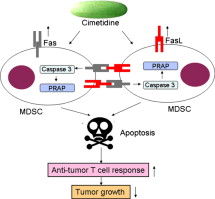
 www.sciencedirect.com
www.sciencedirect.com
Cimetidine and colorectal cancer — old drug, new use?.
Cimetidine and colorectal cancer — old drug, new use? - Nature Medicine
Cimetidine antagonizes histamine's effects on some cancers and improves survival when given in the perioperative period.
"The inexpensive nature of cimetidine is in itself a problem in that the funding of research on patent-expired compounds is very difficult".
Cimetidine Induces interleukin-18 Production Through H2-agonist Activity in Monocytes.

Cimetidine Induces Interleukin-18 Production through H2-Agonist Activity in Monocytes
The present study demonstrates a possible mechanism for the improvement of gastrointestinal cancer patients' prognosis by the histamine receptor type 2 (H2R) antagonist cimetidine. This agent, but not the H2R antagonists ranitidine and famotidine, induced the production of an antitumor cytokine...
Cimetidine Suppresses Lung Tumor Growth in Mice Through Proapoptosis of Myeloid-Derived Suppressor Cells.

Cimetidine suppresses lung tumor growth in mice through proapoptosis of myeloid-derived suppressor cells
Cimetidine, a histamine type-2 receptor antagonist, is known to inhibit the growth of several tumors in human and animals, however the mechanism of ac…
Last edited:
Support Our Work
HEALTH RISING IS NOT A 501 (c) 3 NON-PROFIT
Get Our Free ME/CFS and FM Blog!
New Threads
-
Support legal action of JusticeforME to address decades of Health Inequalities in the UK
- Started by Pike
- Replies: 0
-
Breakthrough: cutting out long chain fatty acids and taking Medium Chain Triglyceride oil.
- Started by Nicolaas
- Replies: 2
Forum Tips
Shopping on Amazon.com For HR
Latest Resources
-
Caitlan's 1-2 punch works with her severe ME/CFSLow dose naltrexone and neuroplasticity power Caitlan's recovery
- Cort
- Updated:
-
New idea to alleviate many complaintsExtreme improvement after respiratory therapy in young patient with ME/CFS, fibromyalgia, Long Covid
- Norbert
- Updated:
-
Drugs Get Mathew Most of the Way and Hyperbaric Oxygen Does the RestOne doctor got Mathew part of the way and another got him all th way
- Cort
- Updated:
-
-
Lucie's Surprisingly Simple Road to RecoveryYears of searching results in a simple and inexpensive pathway to recovery
- Cort
- Updated:












